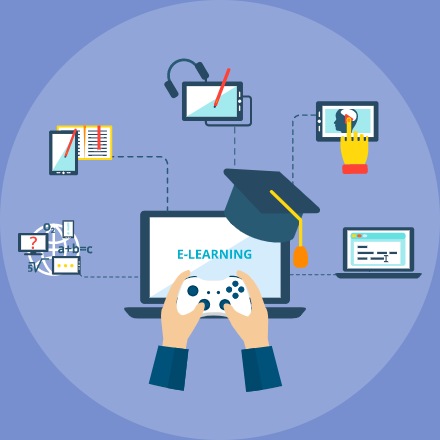e-Learning Ecologies MOOC’s Updates
Optional Update #2: Gamification of Learning
Amongst the various active knowledge making concepts, gamification is one of the most popular and preferred trends of learning amongst students, globally. Gamification of learning is an educational approach to motivate students to learn by using video game design and game elements in learning environments. Games help in situated learning or, to put in simple words, learning that occurs through immersive experiences. The goal is to maximize enjoyment and engagement through capturing the interest of learners and inspiring them to continue learning.
Gamification makes use of gaming mechanics, such as badges, points, levels, or leaderboards, and applies these mechanics to the way a learning course is taught. This, in turn, improves the learner’s motivation. Moreover, the design of game offers the learners the freedom to fail and to face and accomplish various challenges and goals, respectively. The gamification in education is also sometimes termed as game principles for education, gameful thinking, engagement design, or motivational design etc.
While a game-based learning is about crafting the content around game-story, wherein the students may create their own games or play other commercial video games, gamification is about shaping the game around educational context. The following are some of the game elements which are a powerful vehicle for learners to solve a problem:
| Mystery | It requires the learners to fill the gap of known with unknown. For example, finding a hidden key to a closed door. |
| Action | The action that forces the learner to make a move. For example, finding a map or collecting pieces. |
| Challenge | Each of us feel the pleasure in overcoming challenges, which runs in our DNA, and that is why game developers leverage this innate desire by challenging players at each step. |
| Risk | A game is always appealing if it comes with the risk of losing a ‘life’, a need to start over again or to lose all the collected items just because of a wrong move. Such game elements, first challenges and then improves the learner’s ability to focus and make a strategic move. |
| Uncertainty | Learners hold no idea about what may come next in their way. For example, can you solve the puzzle and move to next level or you may get stuck in the round and require to start over again. |
| Progress Visibility | It clearly tells learners what must be done, where to start and how long it must go on. For instance, in PacMan, you know the remaining dots and throughout the stage, players follow through these dots, improving their performance and chances of success. |
| Emotional Content | Games bring up the emotion of anger, sadness, enthusiastic happiness or frustration. In short, it brings out the most valuable human aspect of emotions. These game elements help in encouraging and embracing different human emotions. |
Hence, all of these learning strategies appeal to the core human values, and they also help the learners in adapting the learning material immediately and in a lot more depth.
Let us consider “Brainscape” as the example of gamification in education. Brainscape helps the learners to create exceptional flash cards to meet their learning capabilities. They learn the ideas in the most comprehensive manner, leaving out the ones they already know. Since learners usually forget almost 90% of the material while studying, brainscape overcome this issue with its smart flashcards. Teachers and students can create flashcards collaboratively, using the scientifically proven system of study.
For more examples, refer to https://elearningindustry.com/6-killer-examples-gamification-in-elearning.
References
Kapp, Karl (2012). The Gamification of Learning and Instruction: Game-based Methods and Strategies for Training and Education. Pfeiffer. ISBN 978-1118096345.
Shatz, Itamar (2015). Using Gamification and Gaming in Order to Promote Risk Taking in the Language Learning Process (PDF). MEITAL National Conference. Haifa, Israel: Technion. pp. 227–232. Retrieved 4 August 2016.
Huang, Wendy Hsin-Yuan; Soman, Dilip (10 December 2013). A Practitioner’s Guide To Gamification Of Education (PDF) (Report). Research Report Series Behavioural Economics in Action. Rotman School of Management, University of Toronto. Retrieved 14 February 2014.



The learning based educational content is the thing which changes the mindset of the people that what they think about and how to overcome the issues.towing service